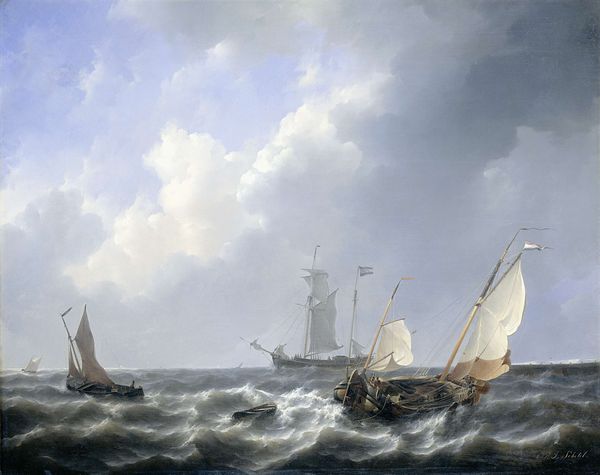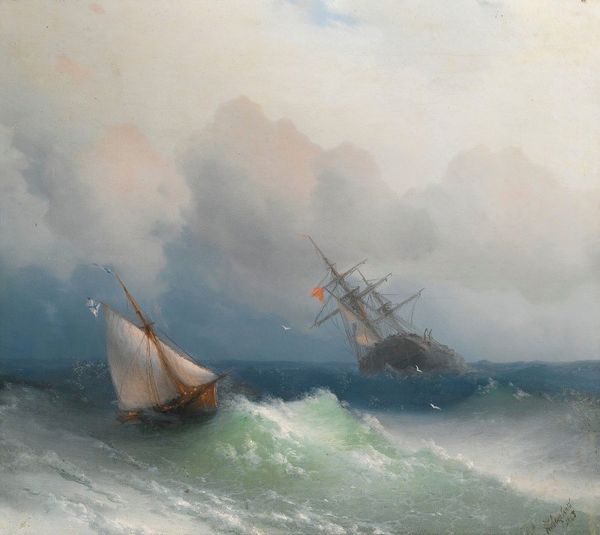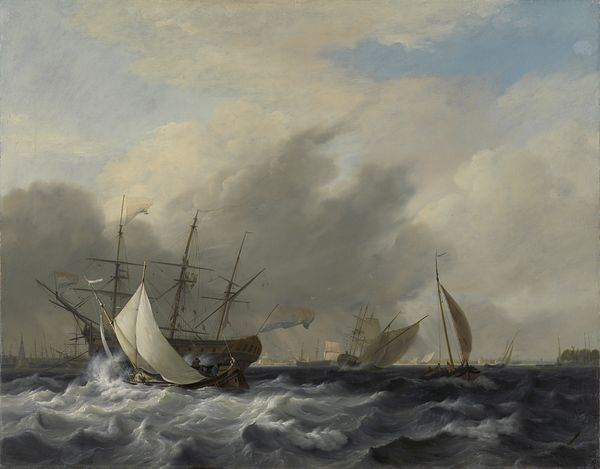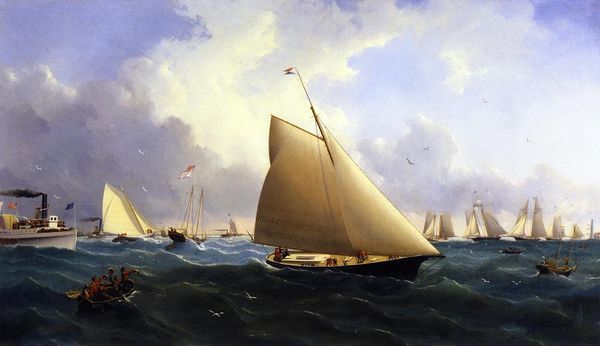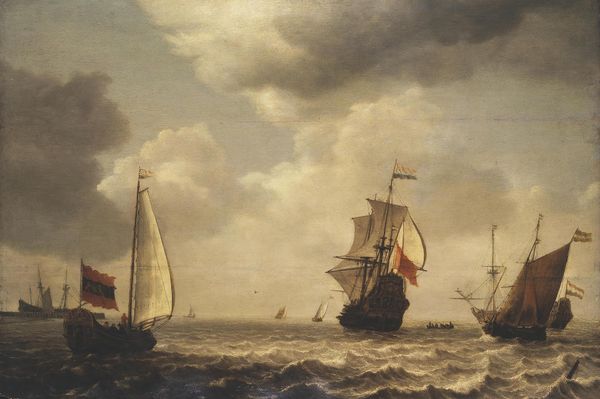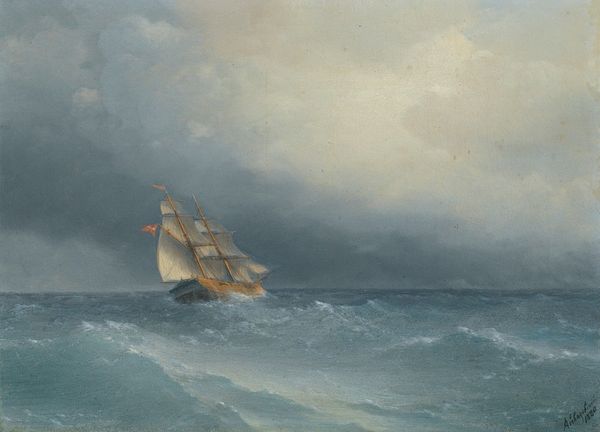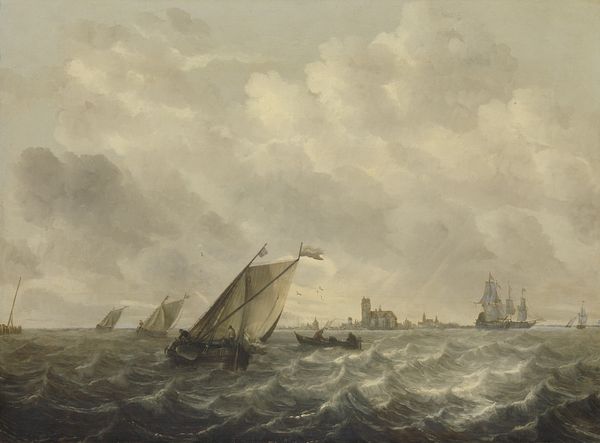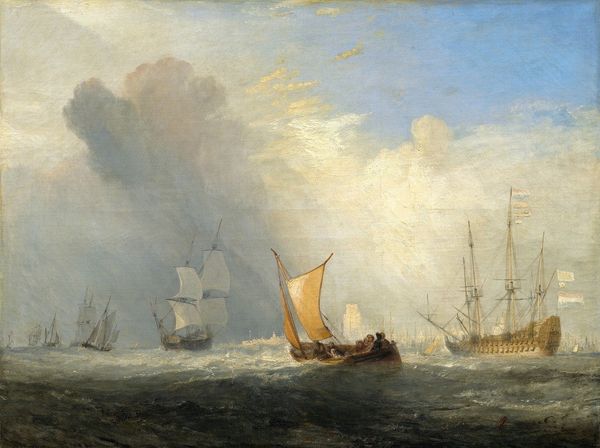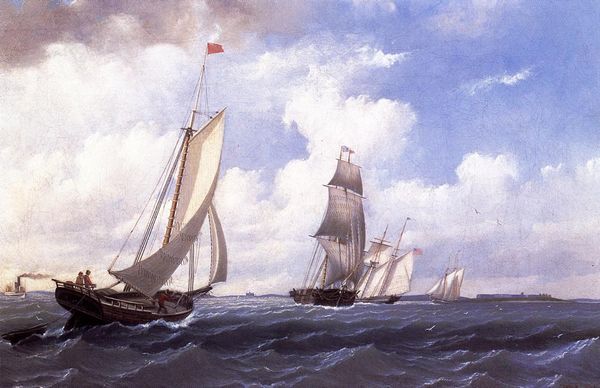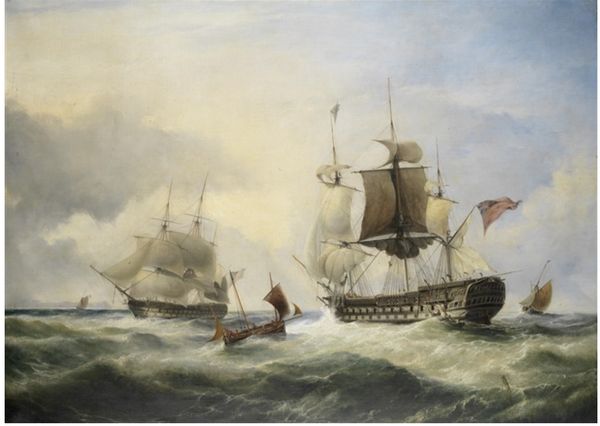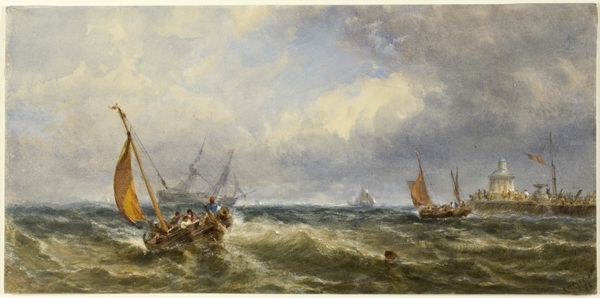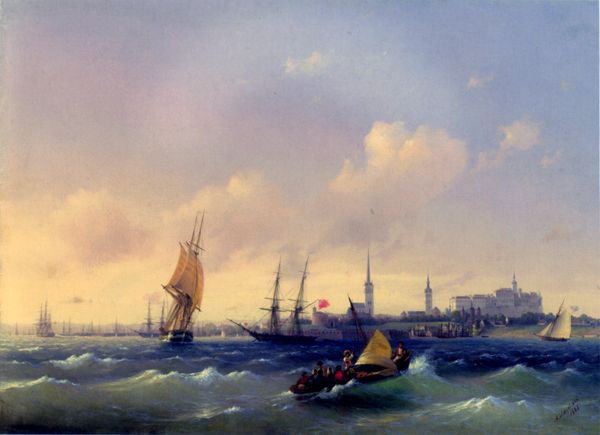
Dimensions: height 90.5 cm, width 133 cm, depth 6.0 cm
Copyright: Rijks Museum: Open Domain
Curator: Willem Gruyter jr.’s “Anchorage at Bremerhaven,” painted in 1868, presents a vivid scene of maritime activity rendered in oil on canvas. Editor: My first impression is one of dynamism tempered by melancholy. The churning water suggests movement and perhaps risk, yet the muted palette lends a somber quality. Curator: Precisely. Note how the composition balances the chaotic energy of the waves with the relative stability of the ships and the solid structure of the port in the background. The interplay between light and shadow defines forms and creates depth, inviting the eye to traverse the scene. Editor: I’m drawn to the figures in the small rowboat. They appear to be in transit, caught between departure and arrival. I wonder what social stratification is visible here – who are these figures on the water, and how does the artist portray their position relative to the grander vessels or the structures on the shore? Bremerhaven, after all, was a major point of departure for emigrants in this period. Curator: An intriguing reading. Gruyter masterfully deploys elements of realism, focusing on observable details—the rigging of the ships, the texture of the water, the architecture of the harbor—to construct a scene that resonates with a sense of verisimilitude. The light is especially captivating; it catches on the crests of the waves and highlights certain sails, guiding our focus. Editor: I see the technique, but what about the politics? The canvas betrays Romanticism’s fascination with the sublime, a sense of smallness before the vastness of nature—or in this case, commerce and its infrastructure. Aren’t these little figures dwarfed and tossed around by a capitalist endeavor much larger than themselves? I'm also keen to note who exactly had the means to own and circulate paintings such as these. Curator: Those perspectives certainly add a layer of interpretation. Considering Gruyter's technique, the way he uses brushstrokes to build up the surfaces and capture the atmospheric effects is quite compelling. His formal choices speak to the evolving stylistic conversations in 19th-century landscape painting. Editor: Yes, the technique is superb, but placing the painting within its historical context opens discussions around labor, movement, and societal structures, revealing deeper narratives embedded within its aesthetic choices. Curator: It’s in this dynamic exchange— between formalism and historical awareness—that our appreciation of a work truly expands. Editor: Indeed, viewing art as both a formal construction and a cultural product, ultimately allows us to confront histories made present by brush and canvas.
Comments
No comments
Be the first to comment and join the conversation on the ultimate creative platform.
